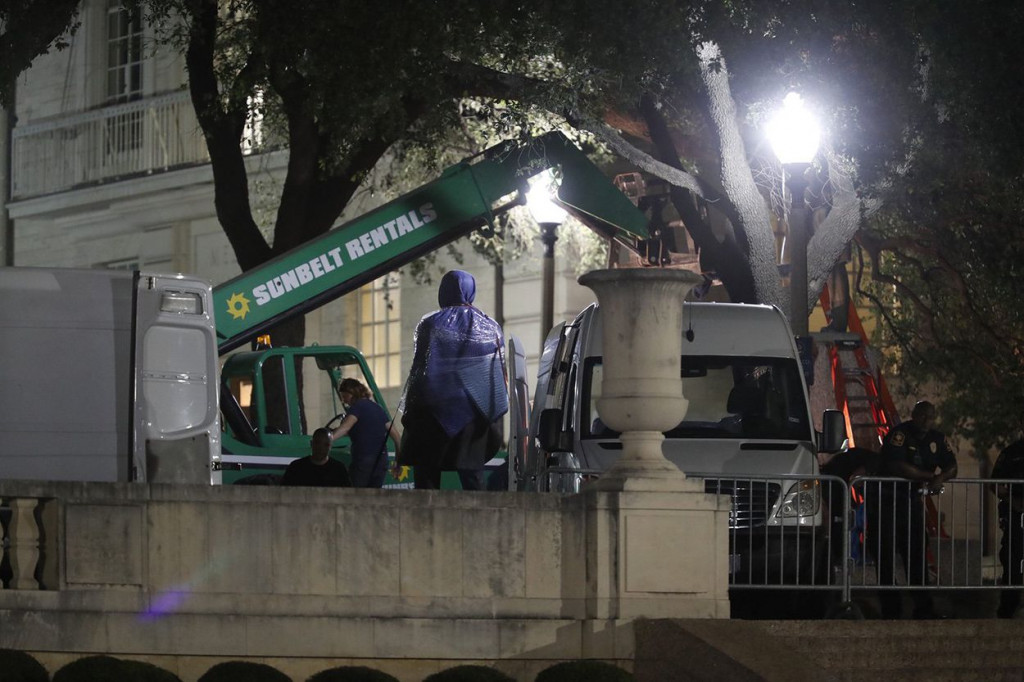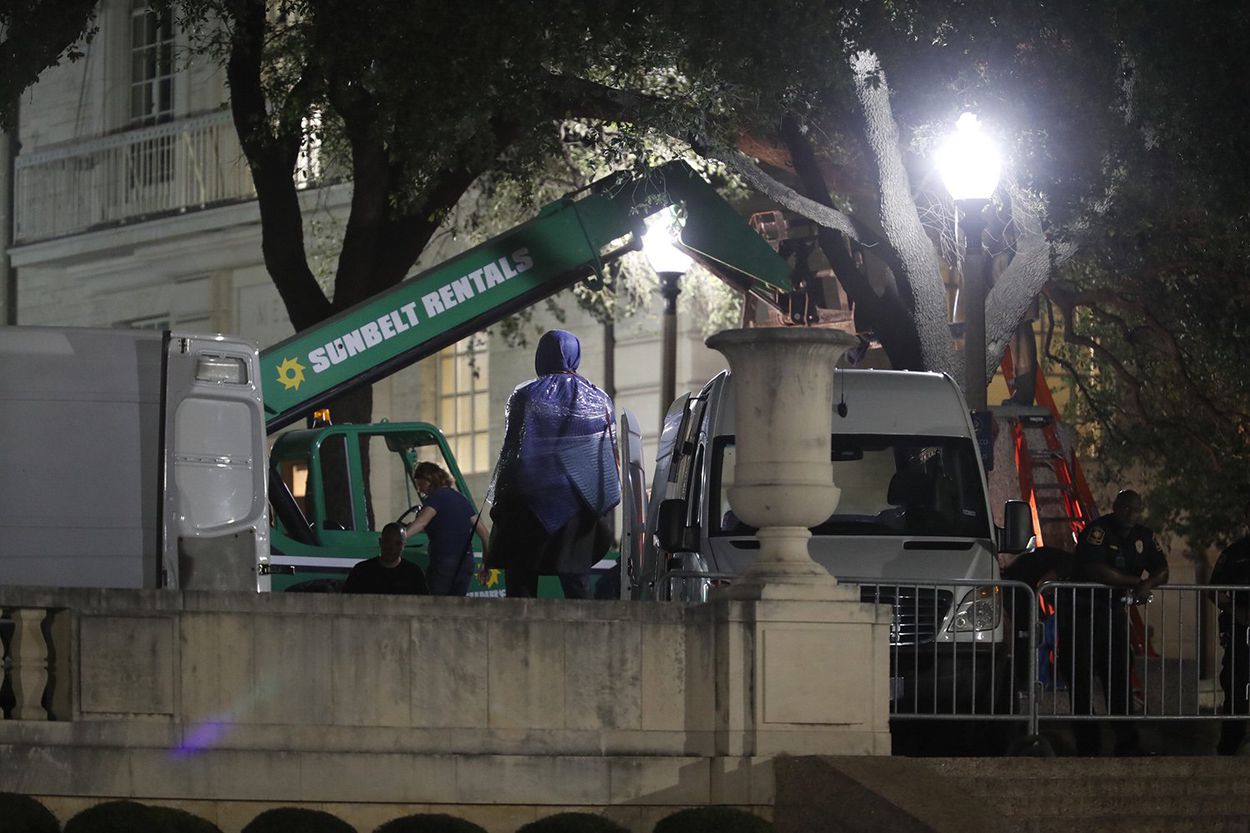TEXAS: UT-Austin Removes Confederate Statue in Middle of Night
Late Sunday night, 10 days before classes were scheduled to start, workers at the University of Texas at Austin began removing three Confederate statues from a prominent grass mall on campus.
The surprise news came with little notice, and the workers were done by sunrise. University president Greg Fenves announced that the statues of Robert E. Lee, Albert Sidney Johnston and John Reagan were being removed because they depict parts of American history that “run counter to the university’s core values.” His e-mail to the campus community was sent just before 11 p.m. A statue of former Texas Gov. James Stephen Hogg was also marked for removal.

Late Sunday night, Aug. 20, 2017, UT-Austin announced it would take down three Confederate statues on campus. A statue of former Texas Gov. James Stephen Hogg (shown here) was also removed.
“We do not choose our history, but we choose what we honor and celebrate on our campus,” he wrote. “As UT students return in the coming week, I look forward to welcoming them here for a new academic year with a recommitment to an open, positive and inclusive learning environment for all.”
Photographs from the scene showed workers using heavy machinery to pull the statues down. They worked under bright lights behind fences while police officers looked on.
The removal of the statues comes about a week after unrest in Charlottesville, Virginia surrounding the removal of Confederate statues in that college town. Neo-Nazis and white supremacists protested those statues’ removal, and clashed violently with counter-protesters. One person died in the violence.
“These events make it clear, now more than ever, that Confederate monuments have become symbols of modern white supremacy and neo-Nazism,” he said.
A UT-Austin spokesman said in a text message that the university deliberately chose to remove the statues in the middle of the night “for public safety and to minimize disruption to the community.”
The three Confederate statues will be relocated to the Briscoe Center for American History. The statue of Hogg “will be considered for re-installation at another campus site,” Fenves said.
Hogg was alive during the Civil War, but was too young to serve. UT-Austin spokesman J.B. Bird said the university had no objection to Hogg’s statue on campus, but “the entire statuary is one exhibit, so it all goes together.”
The removal of the statues comes two years after Fenves made the decision to take down one of Confederate President Jefferson Davis. That move was supported by many on campus, but prompted an unsuccessful lawsuit by the Sons of Confederate Veterans.
The Davis statue removal coincided with nationwide calls for the removal of Confederate homages after a mass shooting in a black church in Charleston, South Carolina.
The three statues that remained until Sunday night were controversial on campus — and were occasionally vandalized. Lee was the top Confederate general. Johnston, a Texan, was also a general and was killed during the Civil War. Reagan, also a Texan, served as postmaster general in the Confederacy.
Disclosure: The University of Texas at Austin has been a financial supporter of The Texas Tribune. A complete list of Tribune donors and sponsors can be viewed here.
Read related Tribune coverage:
- Gov. Greg Abbott on Wednesday weighed in on the renewed debate over Confederate monuments in Texas, saying that removing them “won’t erase our nation’s past, and it doesn’t advance our nation’s future.” [Full story]
- The spark that started the deadly white nationalist rally in Charlottesville, Virginia — unrest over Confederate monuments — has been reignited here in Texas. Here’s a look at what cities are considering. [Full story]
- There are more than a dozen monuments, markers and statues that reference the Confederacy on the Texas Capitol grounds. Use our interactive map — first published in 2012 — to find them. [Full story]
–texastribune.org
###



